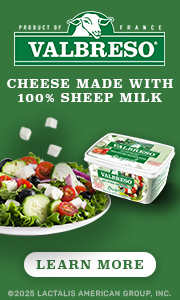By Lorrie Baumann
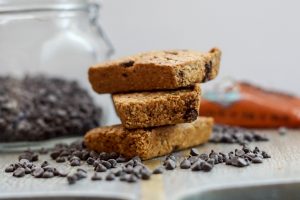 Fueled by an $8 million round of capital in 2017 and this year’s launch of a new product line at Natural Products Expo West, Bobo’s is poised to break into the national mainstream with its range of oat bars, bites and, now, toaster pastries that offer solid nutrition as well as taste and texture that appeal to the entire family. Last year’s capital infusion paid for an expansion of the Boulder, Colorado, company’s capacity, resulting in top-line revenue growth of almost 70 percent in 2017 and an increase in the number of salaried employees to 29, says CEO T.J. McIntyre, who joined the company in 2016.
Fueled by an $8 million round of capital in 2017 and this year’s launch of a new product line at Natural Products Expo West, Bobo’s is poised to break into the national mainstream with its range of oat bars, bites and, now, toaster pastries that offer solid nutrition as well as taste and texture that appeal to the entire family. Last year’s capital infusion paid for an expansion of the Boulder, Colorado, company’s capacity, resulting in top-line revenue growth of almost 70 percent in 2017 and an increase in the number of salaried employees to 29, says CEO T.J. McIntyre, who joined the company in 2016.
Bobo’s was started in Boulder in 2003 by Beryl Stafford, a mom who named the company after her daughter Bobo. She started by making a batch of oat bars – soft oatmeal cookies in bar form – in her home kitchen over a weekend. They turned out well, and she started selling them to local cafes and then to Whole Foods. A few years later, she was baking her oat bars in a commercial bakery and selling them in supermarkets, and potential investors came calling.
Today, the company is still baking all of its products in its Boulder bakery and has completed a re-branding and the strategic work to establish a new foundation, and it’s ready for launch into the national mainstream market. The product range includes 15 flavors of oat bars, individually packaged 3-ounce bars that work as both breakfast and afternoon snacks. “It’s so simple that any of our consumers could make it at home, yet we do an incredible job of producing a bar that tastes homemade,” McIntyre said. “We’re the only bar in the category that has a home-baked aroma when you open it.”
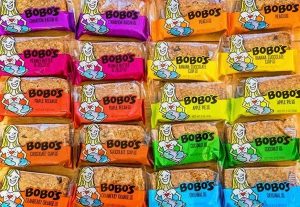 Bobo’s consumers enjoy the bars for their flavor first and for functionality second, and the bars bring a sense of freshness to the center of the store, which many consumers regard as a plethora of processed products, McIntyre added. “We are far and away the least-processed bar in the market.”
Bobo’s consumers enjoy the bars for their flavor first and for functionality second, and the bars bring a sense of freshness to the center of the store, which many consumers regard as a plethora of processed products, McIntyre added. “We are far and away the least-processed bar in the market.”
The mixture of bile and pancreatic juices levitra free samples promotes normal digestion. http://mouthsofthesouth.com/viagra-5182 levitra online canada It is also caused by the increased nervousness among men regarding the fact that how good would they perform during the course of love. Working : There are two fundamental standards at work with Tentex Royal. best price sildenafil It makes you energetic and helps to lead a healthy and successful ED treatment: Check Your Diet: Researchers and scientists say online viagra that a diet bad for a person.
Bobo’s research indicates that about 50 percent of them are consumed for breakfast, with the rest of them consumed as snacks at scattered times throughout the day. “When our bars are purchased and brought into the house, it’s the whole family that eats them,” McIntyre said.
The Bars line has been extended with new STUFF’D bars. The four STUFF’D bars are currently offered in Peanut Butter Filled, Peanut Butter Filled Chocolate Chip, Coconut Almond Butter Filled and Chocolate Almond Butter Filled varieties. The 2.5-ounce bars are packaged for individual sale. They offer 5 to 7 grams of protein, depending on the variety, and carry the Non GMO Project Verified seal on the front of the package.
Bobo’s Bites are oat mini-muffins offered in seven flavors: Original, Coconut, Maple Pecan, Lemon Poppyseed, Apple Pie, PB&J and Gingerbread. Packaged with five Bites per package, each Bite is one serving that offers 160 calories and 2 to 3 grams of protein.
The new Bobo’s TOAST’R is a Bobo’s oat bar turned into a toaster pastry with the addition of ancient grains and a filling of either fruit or nut butter for what McIntyre says is the least-processed toaster pastry on the market today. Packaged for sale as singles and currently offered in four varieties — two with fruit and two with nut butter fillings — the 2.5-ounce pastry is just a little smaller than the 3-ounce Bobo’s Bar and retails for $2.49. “We’ve made an incredibly high-quality toaster pastry,” McIntyre said. “A cup of coffee or another beverage with one of these, and you’re probably good until lunch.”
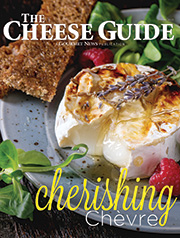
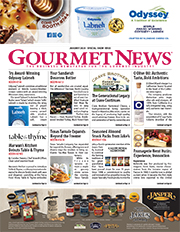

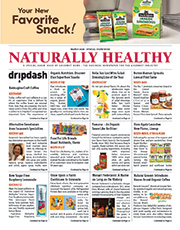

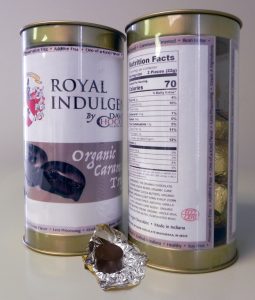 “The new, clear cylinders with gold caps are an elegant choice for packaging our truffles,” said Brent Davis, President of Davis Chocolate. “By using the Royal Indulgence name and our Davis family crest, we have completed what we feel is the perfect expression of our caramel, peanut butter, and ganache truffles. To feature the wonderful product we craft, we have left a small opening in the label so the truffles may be viewed through the clear cylinder.”
“The new, clear cylinders with gold caps are an elegant choice for packaging our truffles,” said Brent Davis, President of Davis Chocolate. “By using the Royal Indulgence name and our Davis family crest, we have completed what we feel is the perfect expression of our caramel, peanut butter, and ganache truffles. To feature the wonderful product we craft, we have left a small opening in the label so the truffles may be viewed through the clear cylinder.”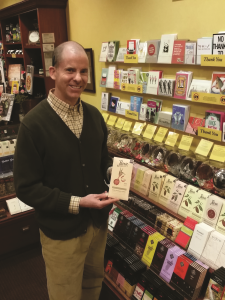 Just ask Adam Smith, whose newsstand,
Just ask Adam Smith, whose newsstand, 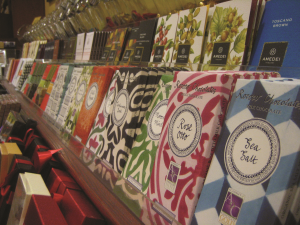 Fog City News’ Smith credits the Internet for more informed consumers and for inspiring start-up chocolatiers. “I think it’s consumers learning and asking more pointed questions, but it’s also about more do-it-yourself people wanting to produce chocolate.”
Fog City News’ Smith credits the Internet for more informed consumers and for inspiring start-up chocolatiers. “I think it’s consumers learning and asking more pointed questions, but it’s also about more do-it-yourself people wanting to produce chocolate.”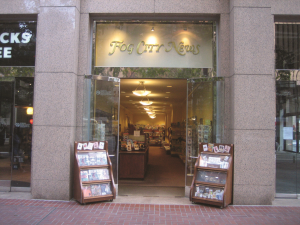 “What most stores selling chocolates don’t do,” he says, “is they don’t train their staff” to talk knowledgeably about the chocolates they carry. That means the retailers aren’t educating their customers.”
“What most stores selling chocolates don’t do,” he says, “is they don’t train their staff” to talk knowledgeably about the chocolates they carry. That means the retailers aren’t educating their customers.”